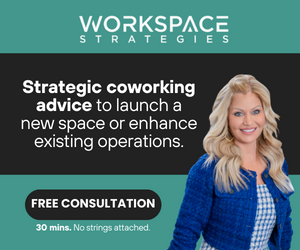This article is part of the Allwork.Space 2023 Future Of Work Forecast. Click here to read about other trends we expect to see in the new year and how they will impact the future of work.
- In the new year, employers will be less lenient on how their employees conduct work, and will attempt to call them back into the office. Those who do return will have a hard time adjusting to old work-life balance problems.
- In the new ways of working, workplace flexibility, internal mobility for opportunity and growth, and aligning personal and organizational purpose and values are front and center.
- A bigger emphasis on the need for personalization of wellness benefits will be more important in the future of work, as everyone defines self-care and wellness differently.
PART OF OUR 2023 FUTURE OF WORK FORECAST
A new year always feels like a fresh start, but some things must remain the same. Heading into 2023, we’re going to continue to see employees struggle with finding work-life balance as the Great Return continues.
Allwork.Space combed through reports and consulted with HR experts to determine five trends that will continue to impact work-life balance into 2023.
1. Employers will continue to try to force workers back into the office, upending remote-work lifestyles
According to a recent Resume Builders survey, nine in 10 companies will require employees to work from an office in 2023.
This is not what workers are saying they want, though, and it might not be exactly what happens — if enough workers push back strongly.
Of the companies that currently allow employees to work fully remote, 73% said they will “definitely” (28%) or “likely” (45%) change their work location policy within 6 months.
Why this change when workers are happy with their newfound hybrid and remote ways of working.
The reason for the push back to the office can mostly be attributed to the money that organizations are losing by choosing to keep offices, but not having many occupants. A better solution that companies may find is to only have their offices open to full capacity for a few days out of the week — or maybe even to close down their office spaces and allow their workers who want to work in an office setting to rent a desk in a coworking space.
Until a solution is chosen, workers will continue to feel pressure — or receive mandates — from their employers to get back into the physical office.
Those who do end up returning to the office after a long-term work-from-home experience will have a hard time adjusting to old work-life balance problems.
Commute time will eat into family time, fitness schedules, or hobbies. Being away from home all day could require care solutions for recently adopted pets.
Returning to an office means big upheaval for many employees who have shaped their lives around the flexibility to work from where they choose. Employers should consider the massive impact a return order will have on the personal lives of their workforce—and be ready for potential morale and retention issues that could result.
2. Employees want their employer’s values to align with their own
When work is such a big part of life, it’s not hard to imagine that employees want the companies they work for to share their values.
Culture, equity, and social impact are important especially to younger job seekers, who are eager to make a difference in the world.
A McKinsey & Company survey found that employees are five times more likely to want to work at a company that spends time reflecting on the impact it makes in the world.
According to the Great Resignation Report 2.0, 86% of employees reported it is very important (50%) or important (36%) for their work to align with their values and aspirations.
According to a survey from CNBC, 40% of workers said they would likely quit their job if their employer did not agree with their political stance. A Qualtrics survey showed that 56% of workers would not consider working for a company that didn’t share their values.
Increasingly, workers care about the morals of their employers. No longer can companies openly support movements or sentiments that the majority of people do not agree with.
3. Quiet quitting might be a long-term trend
Quiet quitting is when workers don’t exactly quit their jobs, but they are less likely to go above and beyond for their current companies, and they do the bare minimum. This is due to a lack of engagement and enthusiasm for their jobs.
Gen Z and millennials are definitely more likely to quietly quit than older generations.
Remote workers are much more prone to quietly quit than in-person employees.
Ethan Drower, Co-founder and Operating Partner of CiteMed, told Allwork.Space “While I believe that quiet quitting is very apparent all over the workforce right now, I wouldn’t label it a ‘problem.’ Employees are just standing up for their rights and ensuring they are not being taken advantage of by the businesses and large corporations they work for.”
It’s true that in the aftermath of the pandemic, workers have discovered that they have a slight upper hand within the workspace. With the past labor shortage, companies were desperate to hire and workers had their pick of the crop. Now, workers don’t seem to care about the impact of their quiet quitting.
This phenomenon is likely to continue into 2023, particularly among those who are forced back into the office and are struggling to find work-life balance in that new arrangement.
4. A combination of virtual, hybrid and in-person work are the new normal, and business leaders need to focus on engagement
Jeff Schwartz, VP of Insights & Impact for Gloat told Allwork.Space, “We’d all like to put COVID in the rearview mirror as many companies are pushing for a return to earlier ways of working — including a return to the office. But, given what we have all experienced and learned over the past couple of years, perhaps we need to focus on what has changed and why we can’t return to old models.”
Employees want opportunity, flexibility and purpose. In the new ways of working, workplace flexibility, internal mobility for opportunity and growth, and aligning personal and organizational purpose and values are front and center.
“Workplaces and workforces have evolved significantly. A combination of virtual, hybrid and in-person work are the new normal, and business leaders need to adapt,” Schwartz said. “That’s the great reassessment, as employees are telling us their expectations have changed.”
Retaining workers has been a huge struggle for organizations over the past few years, and it may help to continue to listen to the types of working that people prefer.
Dasle Hong, Senior Manager, Employer Brand and Internal Communications at DailyPay, told Allwork.Space “The big question is no longer about if companies should be remote, or in-office, or even hybrid. In 2023, the question we should be asking is, ‘how do you inspire the most engagement and connection among your employees?’”
5. Employee wellness will focus more on wellbeing
Expansion of employee wellness means more of an all-encompassing focus on total wellbeing. A bigger emphasis on the need for personalization of wellness benefits will be more important in the future of work, as everyone defines self-care and wellness differently.
According to Kayla Lebovits, CEO and Founder of Bundle Benefits, she predicts that there will be a shift in focus from mental health being the problem to mental health symptoms being the manifestation of a larger problem — and that we will dive deeper into what the issues and problems are that are causing global mental health struggles. Leaders will put more consideration into how they can resolve them to reduce symptoms of loneliness, anxiety, stress, burnout, etc.
“Digital detoxing breaks and wellness days will become standard company practices,” Lebovits told Allwork.Space. “Companies will encourage and write policies to support employee digital disconnecting to focus on better work-life harmony. More companies will provide flexible mental fitness days or planned wellness days to allow people to disconnect, recharge, and take time to care for themselves.”

 Dr. Gleb Tsipursky – The Office Whisperer
Dr. Gleb Tsipursky – The Office Whisperer Cat Johnson – Coworking Marketing Maven
Cat Johnson – Coworking Marketing Maven Angela Howard – Culture Expert
Angela Howard – Culture Expert Drew Jones – Design & Innovation
Drew Jones – Design & Innovation Andrea Pirrotti-Dranchak – Competitive Advantage
Andrea Pirrotti-Dranchak – Competitive Advantage Jonathan Price – CRE & Flex Expert
Jonathan Price – CRE & Flex Expert Jeremy Fennema – Tech Innovation Alchemist
Jeremy Fennema – Tech Innovation Alchemist







